There are wolves on nearly half of the continents in the world, including North America, Europe, and Asia. They make up the largest species of wild canines and are the predecessor to the modern domestic dog.
The various species of wolves can have seven different coat colors, with red being the rarest and mixed-color wolves being the most common.
Rarest: Red Wolf
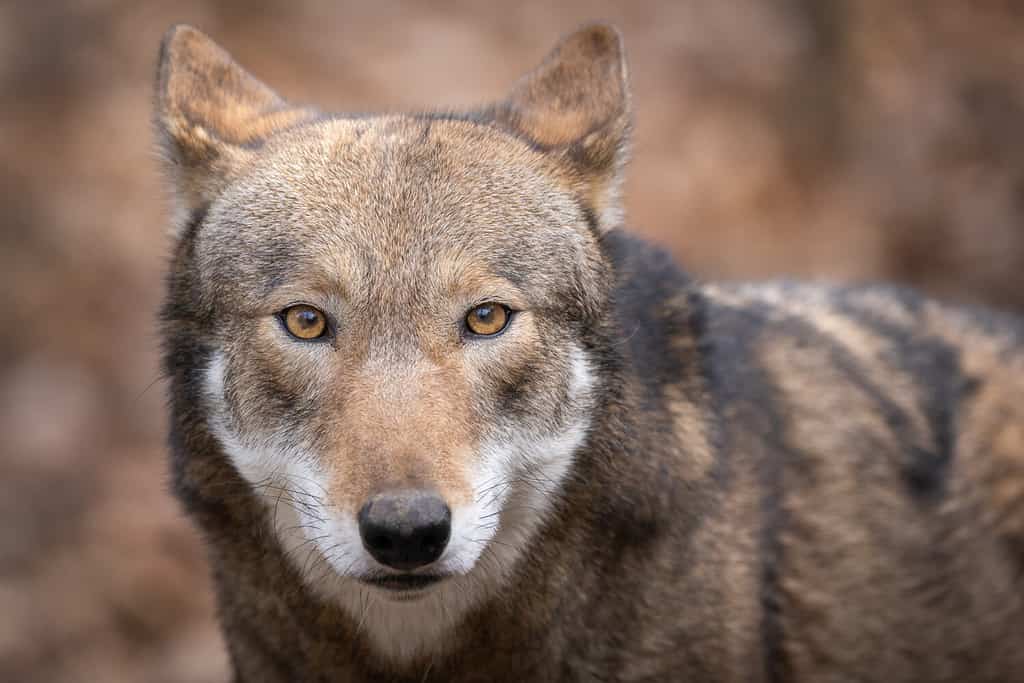
Red wolves used to live abundantly across North America, but are down to only 20-30 left.
©Matt Cuda/Shutterstock.com
Red wolves are the rarest color of these majestic animals. They once roamed the southern United States, with subspecies in Florida, Texas, and Mississippi. Today, only one subspecies of red wolf exists: the Texas red wolf. All of their other relatives died out as a result of hunting and deforestation.
There are only about 20 to 30 red wolves estimated to live in the wild in a small region of North Carolina. Red wolves are considered critically endangered by the International Union for Conservation of Nature, and their population is currently decreasing.
Golden

African golden wolves have a yellow or gold tinge to their coats, which is what gives them their name.
©iStock.com/Anya Newrcha
Golden wolves, or African wolves, are a species of canines that live in nearly every part of Africa. Originally called African golden jackals, these yellow-toned animals were once believed to be a part of the jackal family. However, in 2015, scientific research on their DNA revealed that the canines were more closely related to wolves.
Golden wolves will eat just about anything, but their diet mainly consists of small mammals, invertebrates, and fruit. In ancient Egypt, these golden canines were considered sacred, with some regions even referring to them as gods. However, in North Africa, they were looked at poorly, as untrustworthy animals, and their bodies were often used for sacrificial purposes.
Golden wolves are not threatened and are considered of least concern by the IUCN. Their population is currently decreasing.
White
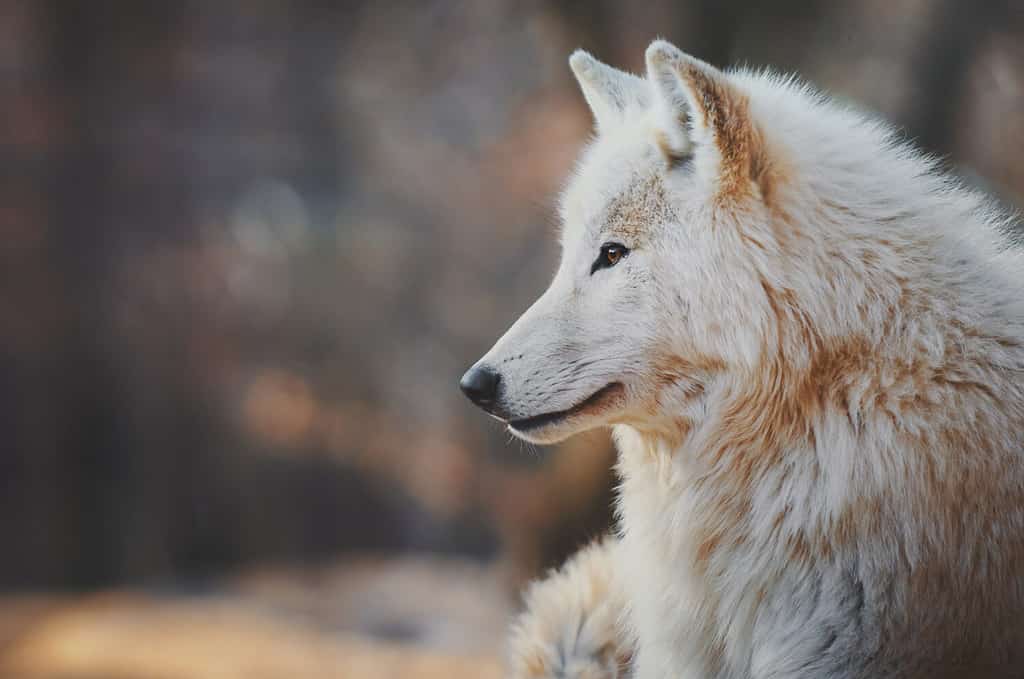
Arctic wolves are some of the most beautiful and unique-colored canines.
©JDzacovsky/Shutterstock.com
Arctic wolves have white coats to blend in with their environments. They only live in the northernmost regions of North America and Greenland. Unlike their relatives, white-colored Arctic wolves do not face the same threats of hunting. That’s mainly because they live in extremely cold areas, and very few humans live near them. Arctic wolves are considered of least concern when it comes to conservation status.
Arctic wolves are usually all-white, although some have gray in their coats as well. That’s because Arctic wolves are a subspecies of gray wolves.
Gray
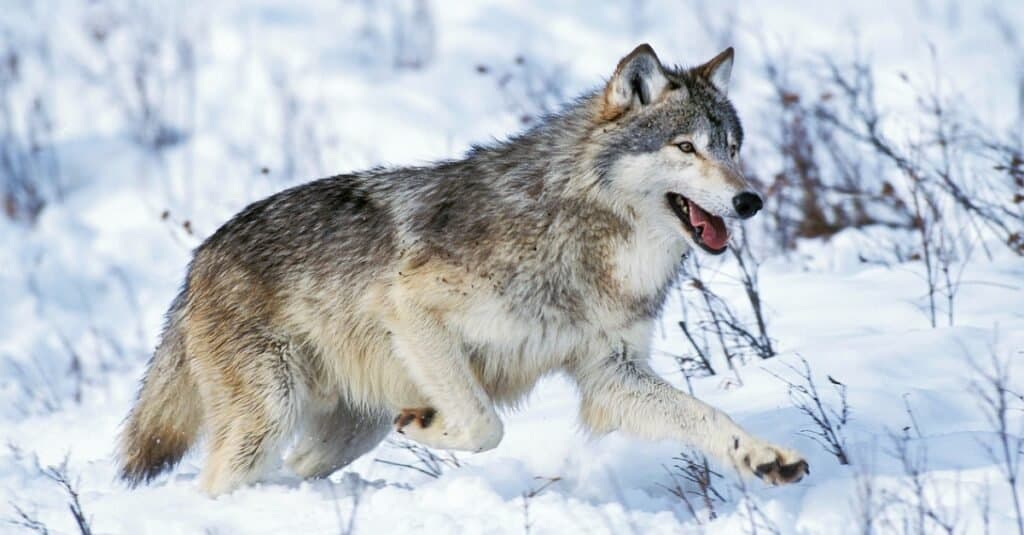
These wolves are considered to be elegant predators and highly social animals that form tight packs.
©iStock.com/slowmotiongli
Gray, which is both their color as well as their species name, wolves are the most common type of wolf. They are also considered of least concern when it comes to conservation, and their population trend is currently stable. While a majority of gray wolves are indeed gray, they come in a few other colors as well.
Gray wolves live in North America, Europe, and Asia, with an estimated count of 200,000 to 250,000 existing in total. Along with being the most common wolf species, they are also the largest of any of the wild canines. Gray wolves have adapted to nearly any climate, but they generally prefer colder, less-populated areas.
Brown
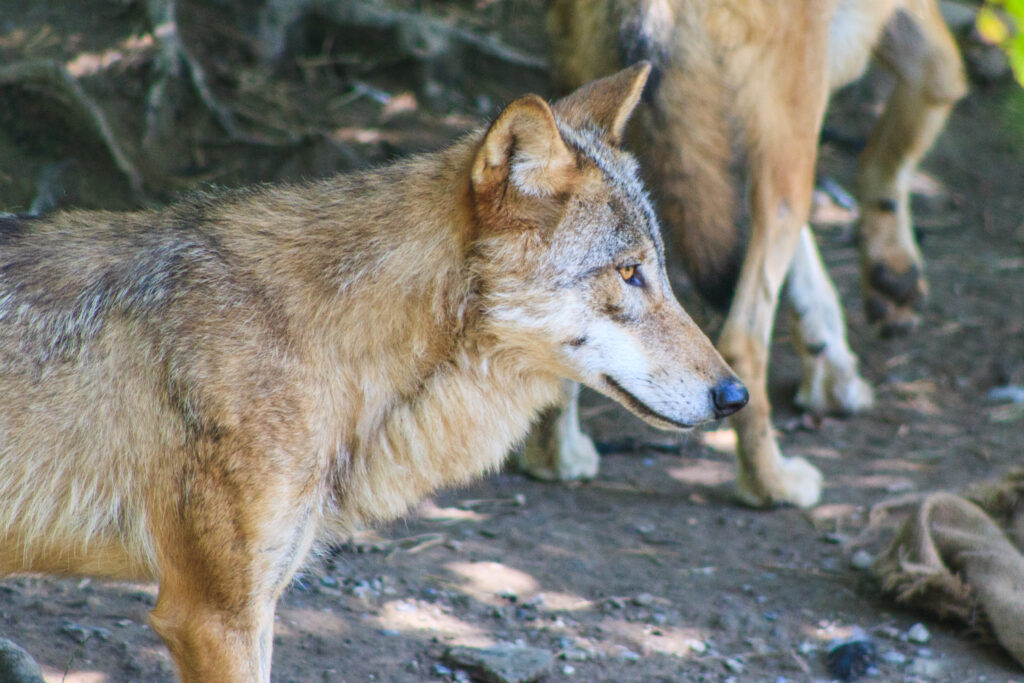
Brown-coated wolves are a color variation of gray wolves.
©Bastian Bodyl/Shutterstock.com
Gray wolves come in many colors, but brown is one of the most common, after gray. A lot of what makes a wolf’s coat color comes from their environment and sun exposure. Wolves who are in the sun constantly will have lighter coats because of this.
Brown wolves often live in forested areas because they have adapted to have coats that blend with their environment. Brown wolves can be anywhere from a light tan color to a dark, chocolate brown.
Black
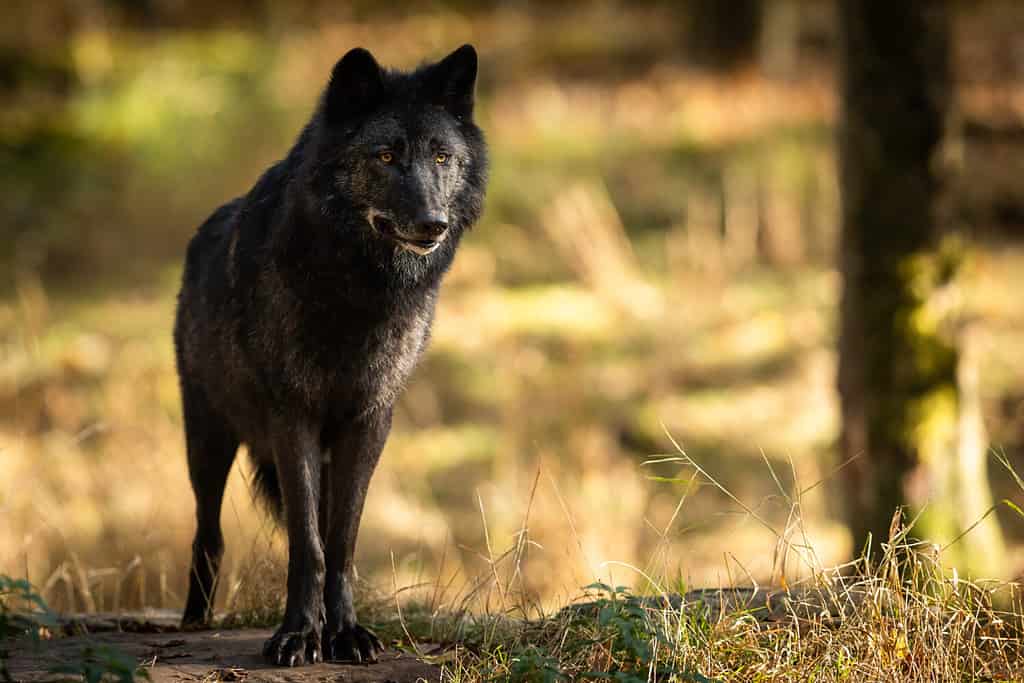
Black wolves owe their coloring to faulty genes from being bred with domestic dogs.
©AB Photographie/Shutterstock.com
Wolves with black coats are also considered to be a type of gray wolf. Their coloring comes from a genetic mutation of their K locus gene. This mutation results in a condition called melanism, which makes their coats a dark color. As scientists investigated black-coated gray wolves, they discovered a prevalence of them in North America as compared to Europe.
More studies of black wolves led scientists to the conclusion that black-coated wolves were the predecessors of domestic dogs. The genetic mutation that causes the wolves to have their black coloring first occurred in domestic dogs. It was when domestic dogs and wolves were cross-bred that the genetic mutation was spread to gray wolves.
In the past, some red wolves also had black pelts. However, due to species loss and their declining population, red wolves no longer have black variants.
Most Common: Mixed
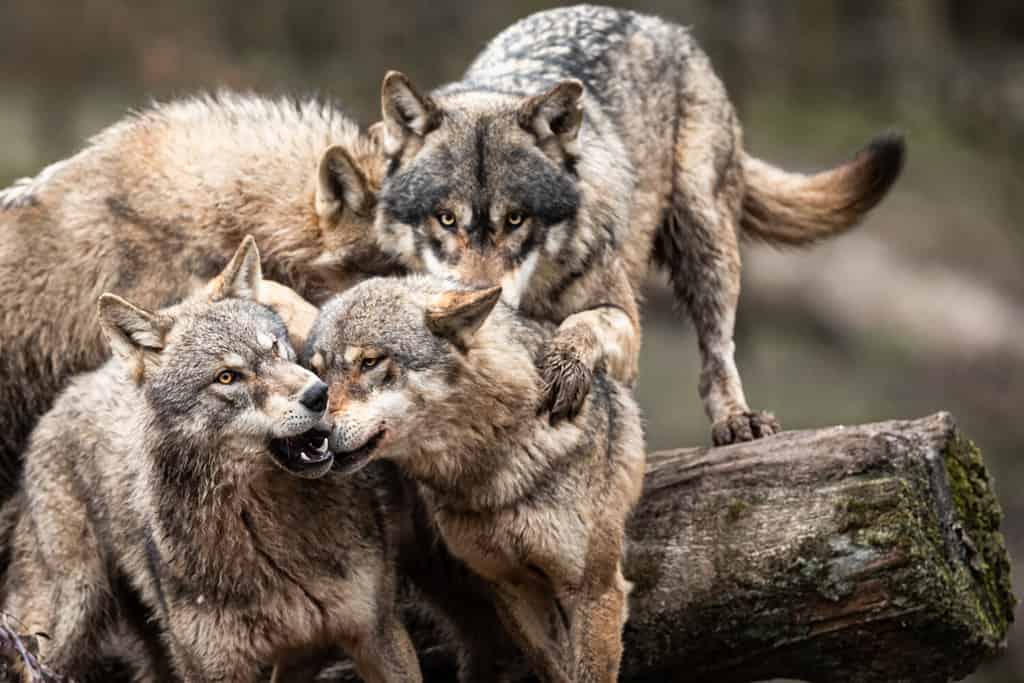
This pack features browns, blacks, whites, reds, and yellows in their coat colors.
©AB Photographie/Shutterstock.com
Mixed coat colors are common in gray wolves. Gray wolves can come in a mixture of gray, brown, black, red, and white. Most wolves have at least 2 colors in their coat if not more. One of the most common color combinations is gray and brown.
Summary of Wolf Colors
| Ranking | Color |
|---|---|
| #1 (Rarest) | Red |
| #2 | Golden |
| #3 | White |
| #4 | Gray |
| #5 | Brown |
| #6 | Black |
| #7 (Most Common) | Mixed |
The photo featured at the top of this post is © Luke23/Shutterstock.com
Thank you for reading! Have some feedback for us? Contact the AZ Animals editorial team.







